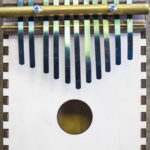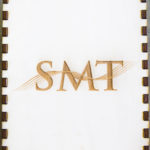Session theme: “Diversity in Music Theory Pedagogy”
(Friday, November 8, 2019, from 2:15 – 5:30 pm)
Handout for Part 1 of the session.
Handout for the talk by John Roeder in Part 2 of the session.
Handout for the talk by Robin Attas in Part 2 of the session.
Handout for Part 3 of the session.
Session description
Part 1. Instrument-making activity (30 minutes)
Quintina Carter-Ényì (University of Georgia), moderator
Marvin Wayne Allen (Morehouse College)
Ariel Alvarado (Spelman College)
Tyler Jennings (Spelman College)
Donovan Polk (Morehouse College)
Elaine Ransom (Spelman College)
Julian Rucker (Morehouse College)
Kha’Zhir Stevenson (Spelman College)
Ridge White (Morehouse College)
The above facilitators will lead participants in an instrument-making activity with materials provided by Morehouse and Spelman Colleges, commonly found on college and university campuses (e.g. laser cutters).
Part 2. Lightning talks on diversifying music theory pedagogy (120 minutes)
John Roeder (University of British Columbia): “World Music as a Resource for Teaching Music Theory”
Nancy Rao (Rutgers University): “Including Music by Diverse Composers: Redefine Modes of Analysis”
Robin Attas (Queen’s University): “Working with Diverse Student Populations in the Classroom”
Each talk will be followed by a 20-minute breakout discussion between the members of the audiences.
Part 3. Performance activity (30 minutes)
In this last activity, the lamellophones made in Part 1 will be returned to the audience after having been tuned. Once the instruments are returned, workshop facilitators will guide groups of participants through performance activities responding to the three topics of the lightning talks.
- Learning a transcription of a cyclical process from Balinese Gamelan music
- Studying and practicing a new composition by Emily Koh (University of Georgia)
- Aural training exercises using lamellophones
These performance activities will demonstrate multi-sensory learning strategies for the classroom, and tools that may be used to implement the action items discussed in Part 2, without significant cost to a department or school of music.


